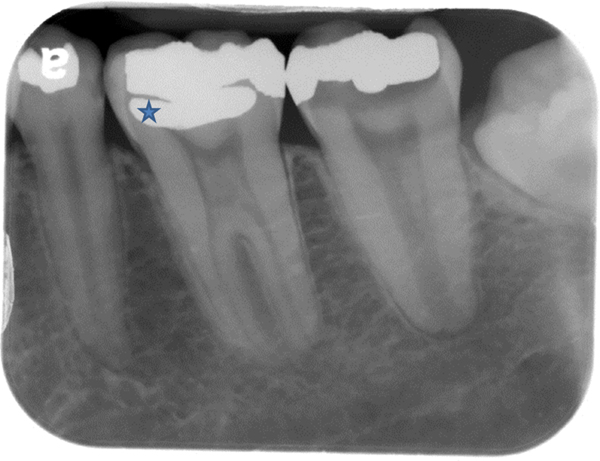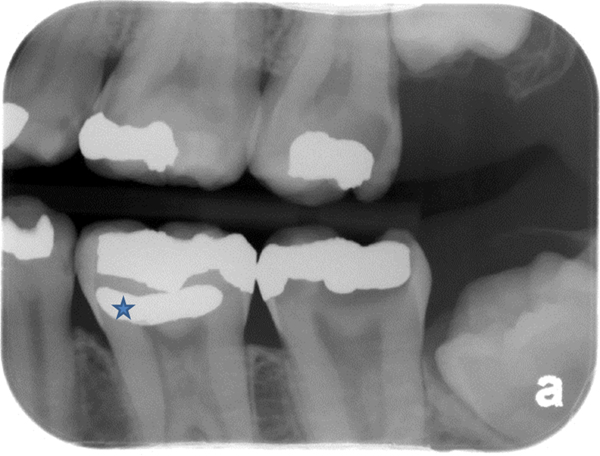This post was in request to an example of how to use the SLOB rule with vertical angle changes. So here we go.
SLOB rule with vertical angle changes
When referring to vertical angle changes, the images are described as inferior (shows more inferior objects) or superior (shows more superior objects). For example, using two radiographs, a mandibular molar periapical radiograph and a molar bitewing radiograph, the mandibular molar periapical radiograph would be to the inferior and the molar bitewing radiograph would be to the superior. Below is an example with a metallic restoration (marked with a blue star) on the mandibular first molar and the steps used for this rule.
1) Using the two images above identify one as image 1 (mandibular molar periapical radiograph) and one as image 2 (molar bitewing radiograph).
2) Select two things that are visible on both images – 1) a fixed or known object (occlusal metallic restoration on mandibular first molar) and 2) the unknown object (metallic restoration with blue star).
3) Determine which direction the images appear to move from image 1 to image 2 (superior).
4) Next determine where the image of the unknown object (blue star) moves in relation to the fixed object (occlusal metallic restoration) from image 1 to image 2 – the metallic restoration moves inferior (image 1 to image 2) compared to the occlusal metallic restoration.
5) Using the SLOB rule (same-lingual, opposite-buccal) this shows that the unknown object image moves in the OPPOSITE direction as the images (1 to 2) and therefore it is to the buccal of the occlusal metallic restoration.
Using vertical angle changes with the SLOB rule takes practice (as does any image shift exercise). Keep an eye out for each Monday in November as I will be posting practice examples for you to try out and test yourself.
Should you have any questions or thoughts on this topic, please let me know.
Thanks and enjoy!






One thought on “SLOB rule (Same-Lingual, Opposite-Buccal) using vertical angle changes”
Comments are closed.